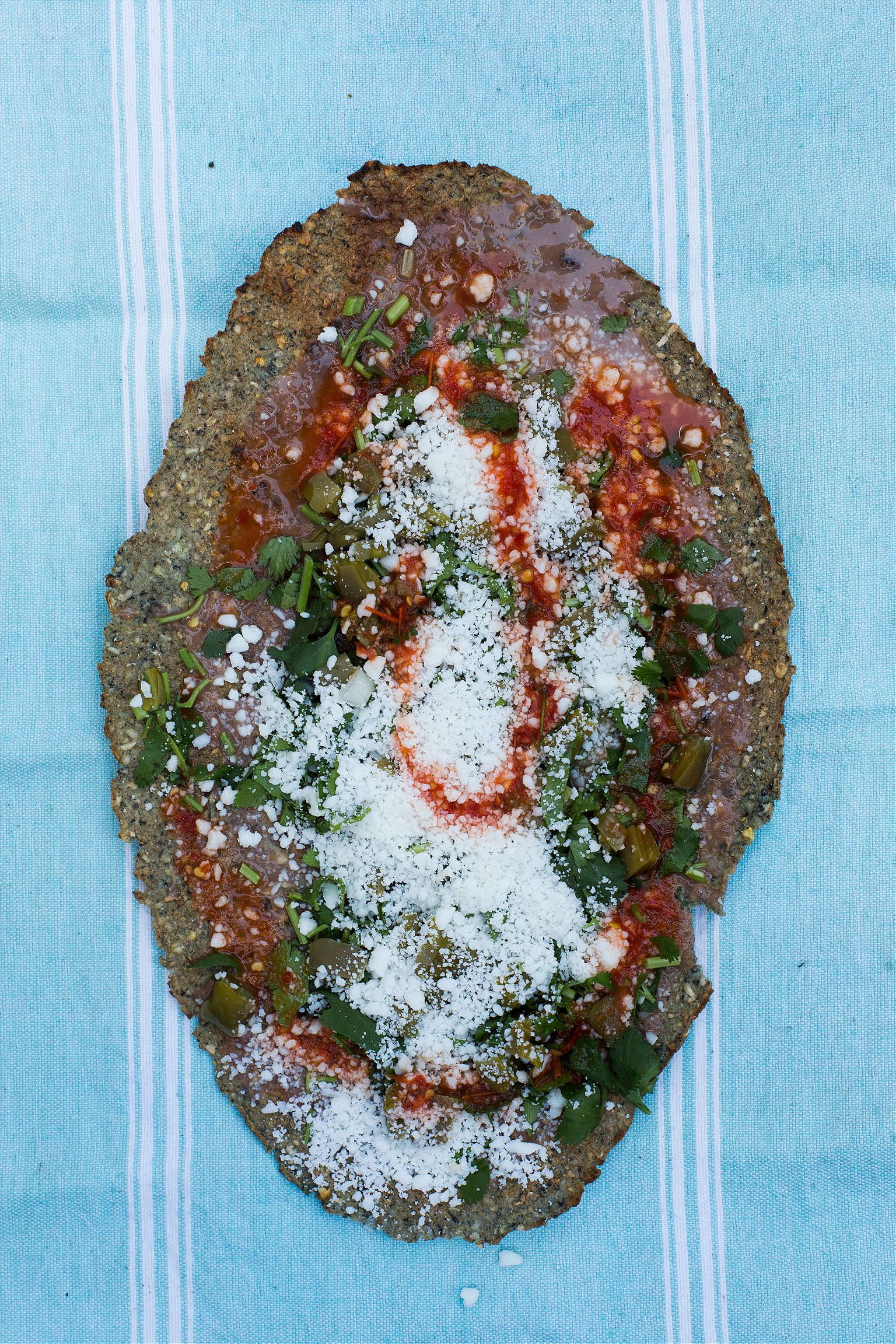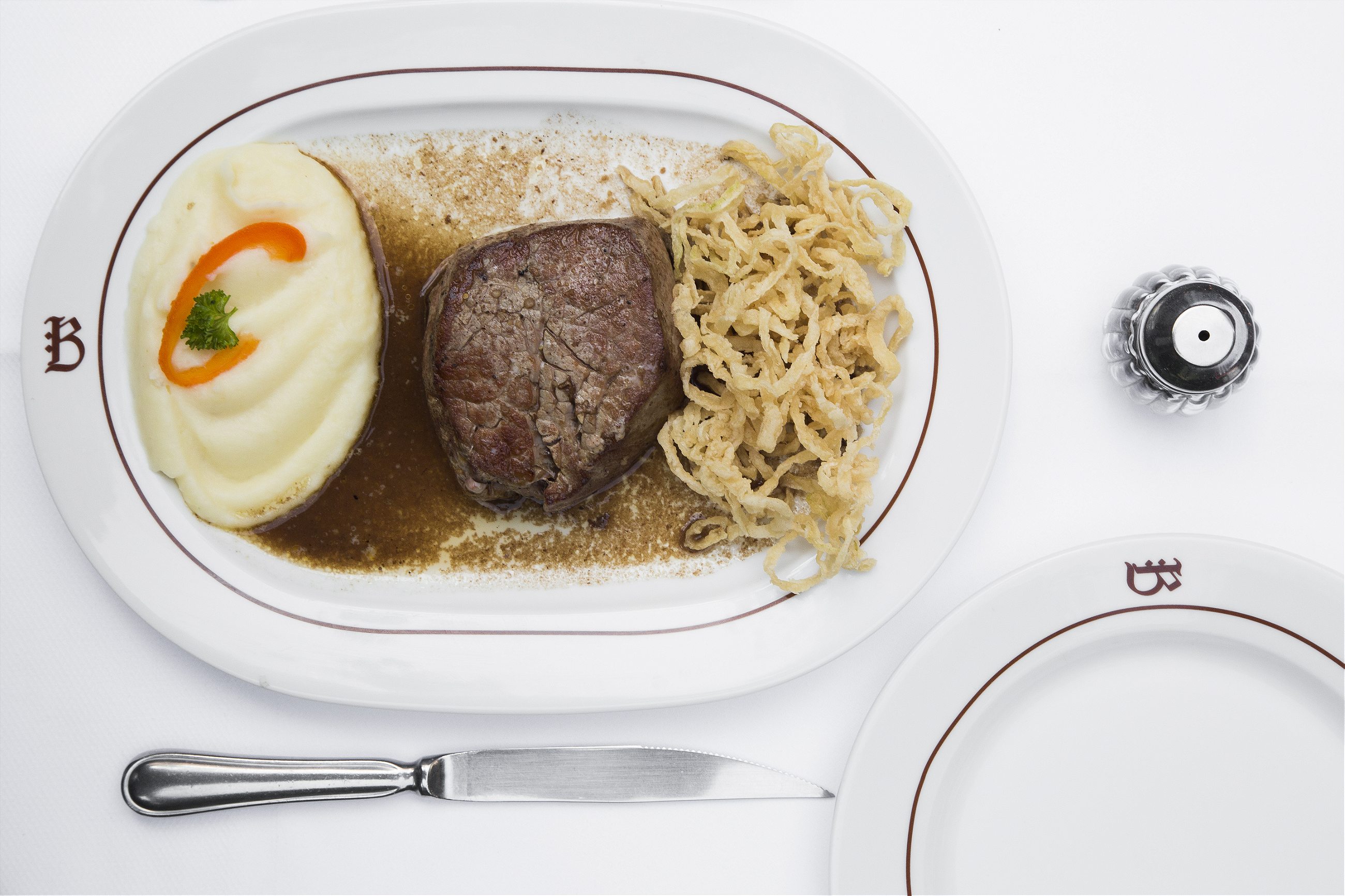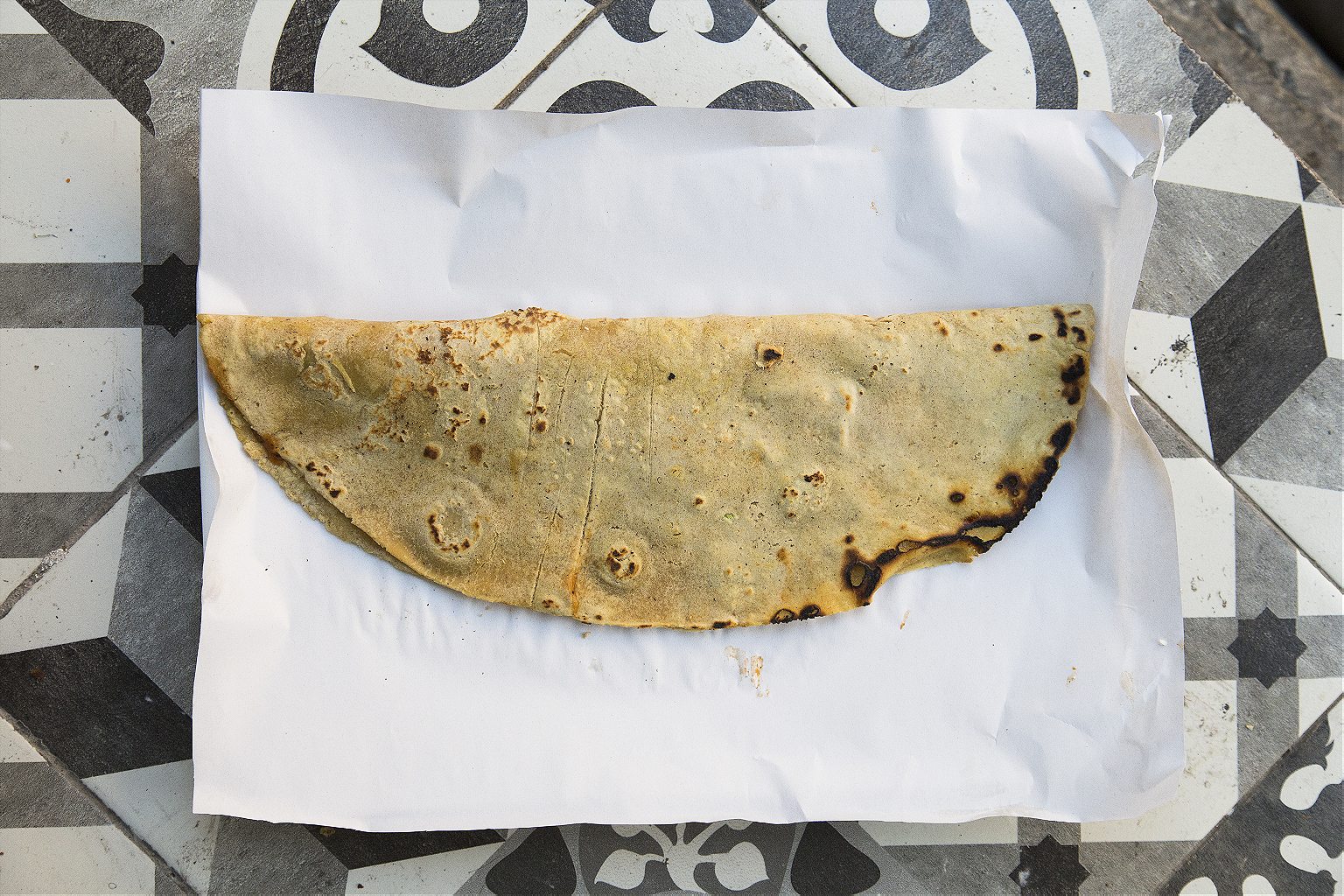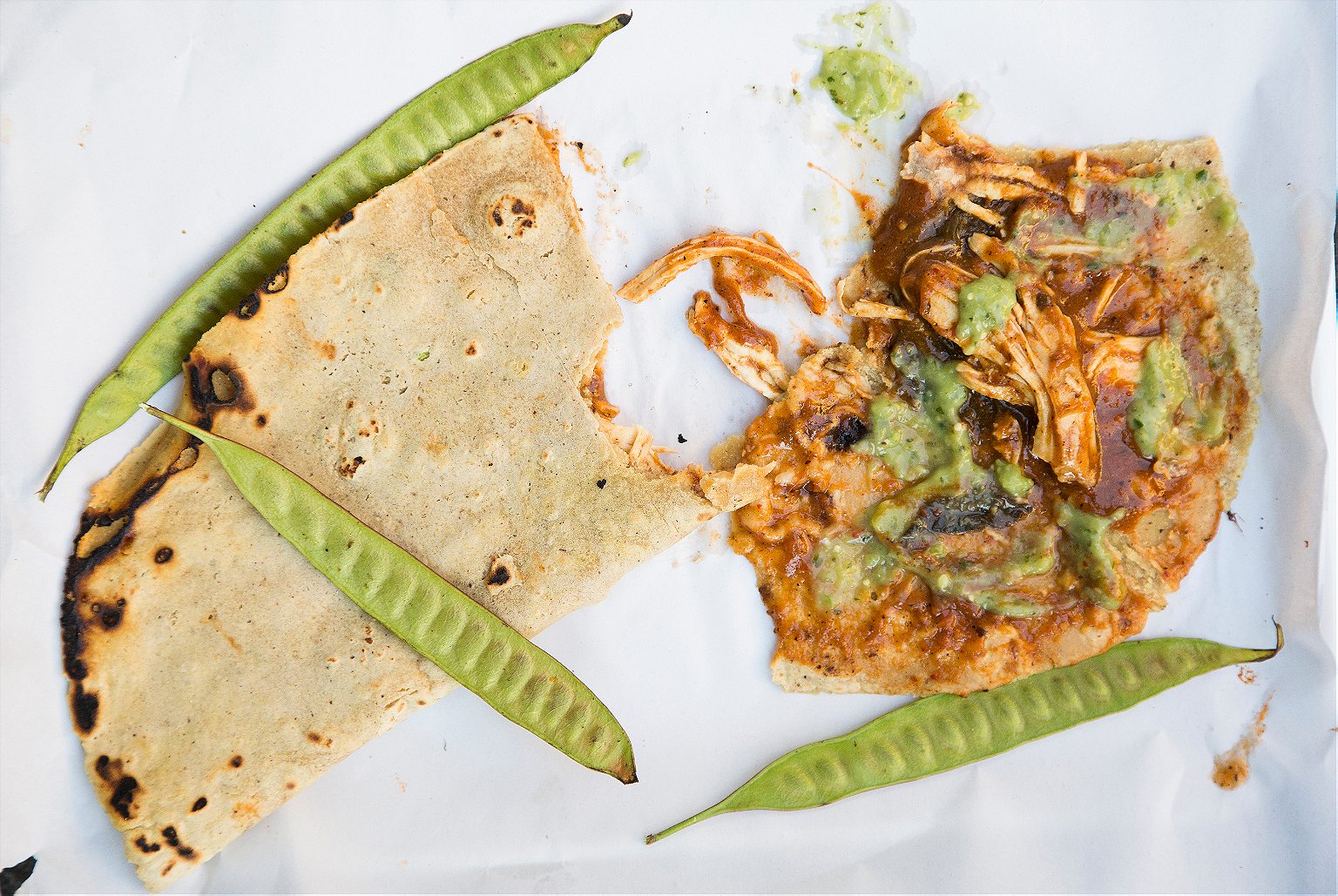From filete chemita to yukgaejang, these are the dishes that define the Western hemisphere’s biggest city.
Since at least the time of the Aztecs, the Valley of Mexico has exerted a gravitational pull on the world around it. The Aztecs came to the great Lake of Texcoco in the 14th century and built the greatest city in Mesoamerica. When the Spanish arrived on the Gulf coast, they made their way here immediately; they proceeded to destroy Tenochtitlan and build their own great metropolis, which would, in short order, become the finest city in the New World. Goods flooded the city’s markets; new cuisines emerged as unknown ingredients merged with the agave and corn and tomato and chile that had first been cultivated in the fertile highlands to the east. Mexico City’s history can be read in blood or in gold, but it is perhaps most legible in food, spelled out at every loncheria and taco stand, every power-lunch and immigrant enclave. If history is transmitted through food, then no city in the western hemisphere wears its past so proudly on its sleeve as Mexico City.
Huarache Toluqueño, stalls around the Zócalo
Eating a huarache toluqueño—a relatively young invention that, as its name suggests, comes from afar (or at least from Toluca, the capital of neighboring Mexico State)—is like eating before the arrival of Columbus in the West Indies, before Cortés landed in Veracruz, and before the destruction of Tenochtitlan. Though probably not more than 80 years old, this dish could just as easily be the oldest surviving street food in Mexico City: a large tostada of blue corn—pounded, not ground, to give it a coarser texture—covered with a simple mixture of beans, nopales, and cilantro, maybe mixed with some xitomatl (tomato), maybe with some ahuacatl (avocado). There’s nothing about this dish that requires the last six hundred years of history: it’s straight from the milpa, the pre-Hispanic agricultural system that still survives in rural villages throughout Mexico.

Caldo Tlalpeño
In this short guide, this may well be the only Chilango dish that is, in the end, still rural, a bridge between two towns. Like so many recipes, Caldo Tlalpeño’s origins either reach the heights of legend or are terribly banal. Legend tells us that this dish was first served to His Serene Highness Antonio de Padua María Severino López de Santa Anna y Pérez de Lebrón (the on-again-off-again Mexican dictator for much of the 19th century known to his detractors, and to history, simply as Santanna) during a drunken night out in the village of Tlalpan, then outside the city, now absorbed into its southern periphery. More mundane versions place the dish’s origins at the now-defunct Indianilla station in what is now the colonia Doctores, just south of the Centro Historico, where trains used to leave for Tlalpan. The soup was sold at small stalls to feed people on the 10-mile journey south.
Traditionally made with sour pear, most places today make a caldo tlalpeño using xoconostle, a puckering cousin to the prickly pear. If my memory serves, the poet and folklorist Rúben M. Campos wrote about eating a caldo in Tlalpan along with “sweet, sparkling” pulque—the fermented sap of the agave, a popular drink from the Aztec period—as far back as 1900. It’s a dish that’s also a bridge between two towns, between an urban present and a rural past.
Filete Chemita, Bellinghausen or Prendes (now at Palcio de Hierro in Polanco)
There are two ways of writing the name of this dish, a simple platter of beef with butter, demiglace, and mashed potatoes. Filete Chemita, written with uppercase letters, is an aristocrat’s dish, born in the old Prendes Restaurant, founded on the site now occupied by the Palacio Bellas Artes in 1892, where it was named for a regular diner. For decades, Prendes was the most ‘important’ restaurant in Mexico City: everyone who was anyone ate there. The great muralists, Rivera and Siqueiros; Francisco Madero, Mexico’s abstemious, vegetarian first revolutionary president, and Victoriano Huerta, the treacherous general who assassinated and succeeded him; President Lázaro Cárdenas and the disastrous Díaz Ordaz—all of them ate, at one time or another, in Prendes, their faces immortalized on the restaurant’s walls. In 1915, the owners of Prendes opened Bellinghausen in the Zona Rosa, where they duplicated much of their original menu. Though the original Prendes no longer exists, Bellinghausen still serves to a well-heeled crowd during lunch hours.
Written with capital letters, Chemita is fixed in the past, immortalized like a portrait collecting dust on the wall of a long-shuttered dining room. Written in lower-case—filete chemita—it’s transformed into something common, belonging to everyone and no one: a dish that transcended its origins to become something paradigmatically Chilango.

Mapo Tofu, Barrio Chino
This dish is a form of resistance. For at least 60 years—that is, from the last two decades of the 19th century through the first four of the 20th—anti-Chinese racism was formally established in Mexican law (look for the excellent book Chino: Anti-Chinese Racism in Mexico by Jason Oliver Chang). In the late 1800s, Chinese immigrants arrived in the country to build railroads, beginning in the north and eventually reaching the capital. Mexico City’s Chinatown, first developed on the western side of the historic center between 1910 and 1930, was less a neighborhood than a fortress. Even after the official campaigns against the Chinese were dropped, Chilangos still viewed the barrio chino through a veil of racism; it was seen as a terrifying place of fearsome traditions, opium, and venereal diseases. But Mexico City’s Chinese population adapted, creating a new style of Mexican-Chinese cooking specific to Mexico City’s barrio chino that has, through the years, become indispensable. The staple dishes of the Chinese-Mexican arsenal have changed, but the mapo tofu served at Hong King restaurant, open since 1963, is much the same as it always has been. I’m not interested in a “pure” example of the dish—there is more “authentic” Chinese cooking going on these days in the Cantonese restaurants in a neighborhood called Viaducto de Piedad, southeast of the city center—but rather in a dish that contains a whole complex history of solidarity and stoicism, a tremendous lesson in strength in the face of a dizzyingly ferocious city and world.
Tacos de canasta
According to historians, the taco de canasta—which translates as ‘basket taco’—was the first to be sold on the streets of the capital, and it’s easy to see why. Really just tacos de guisados (cooked fillings) dressed and packed very tightly in cloth to conserve them for a full day’s sale, they were extraordinarily convenient and easy to transport. They’re the taco of the office worker, the day laborer, the man or woman on the move. One of the old known photos of the sale of tacos on the streets of Mexico City, taken around 1920, is of a group of hawkers gathered around a taco de canasta vendor.
The most common varieties are stuffed with beans, minced pork, potato, and chicken with adobo, and the size is always the same: taco #14 (14 cm in diameter), though some will come in a smaller size, and others will come in two tortillas for a bit more heft. They’re sold over counters at miniscule storefronts, from baskets mounted on bicycles, or at plastic tables set up on the street. There’s always salsa on hand, and sometimes bowls of pickled chiles and carrots. Of course, there are taqueros out there experimenting with new flavors or styles. Sitting on my desk, I have a Complete Course on Tacos de Canasta, published just last year, offering “variations” that include tuna a la mexicana and potato with sardines. The city is always changing; so are its tacos.
Carne Tampiqueña, La Corte
This dish originated in a restaurant called the Tampico Club on Calle Balderas, one of the most important avenues in the Centro Historico. First served in the late 1930s, Carne Tampiqueña has since become ubiquitous on fonda menus across the city and country: grilled beef with beans, an enchilada, rajas (sliced poblano chile) and guacamole. It’s inevitable, almost boring. It didn’t used to be.
The Tampico Club was a restaurant for the wealthy. At the time of its founding, the bipolar capital was in the throes of a period of intense malinchismo—a term used to describe an obsession with the foreign, derived from the name of Cortés’s indigenous translator, La Malinche. At the same moment, los capitalinos were experiencing an equally powerful pull toward nationalism. So at a time when the French restaurant Les Ambassedeurs represented the absolute pinnacle of refinement, Tampico Club, located just 1500 feet away, aspired to the same level of elegance but under the banner of Mexican cookery, while also staying open 24 hours a day.
Named for the city of Tampico, a port on Mexico’s northern Gulf Coast where the owners spent a good part of their youth, Tampico Club was, in its time, a high-flying place, close to the intersection of Reforma, Mexico City’s grand avenue, and Avenida Bucareli, a point that was, for years, the hub of the city’s journalism world, what some older establishment journalists still refer to as “information corner.” This was where journalists came to sell themselves, and politicians came to fatten them with bribes. Salvador Novo, one of Mexico City’s great chroniclers (and gossipers) described the clientele at Tampico Club as empistolados – or loaded, as in armed. There’s no more Information Corner today (politicians now would rather see journalists dead than bribed), but Carne Tampiqueña has, fortunately, lived on (for a particularly good version, try it at Restaurant La Corte, just south of the Zocalo, which serves it most days as part of its three-course comida corrida).

Empanada de Amarillo, Restaurante Xaachila
There are endless ways to define a city. You can define it by urban agglomeration, by density, by geography, by political organization, by social taxonomies. Here’s another way: a city is a manifestation of a wish. If the village is a prison, then the city – and what’s more, La Capital, with its capital letters like the towers of a cathedral—is liberation, a wish made manifest for immigrants.
Some of those immigrants came here from Oaxaca, and many of those came to sell food, gathering from the 1940s onward as Mexico City’s population boomed. They gathered along the street that leads to the Church of the Santísima at the eastern edge of the Centro Histórico to set up their shops and sell their products. The most Oaxaqueño of all those shops and restaurants is a tiny stall called Xaachila, recently expanded into the open storefront next door, and their best dish is their empanada de Amarillo. It’s a simple, perfect dish: a tortilla, tasting of grain and ash; yellow mole with smoky notes of chile chilcostle or guajillo and a cache of spices (fat pepper, clove, cumin, oregano, the clean anise notes of hojasanta); and shredded chicken for texture and body. It’s unforgettable.


Tacos al Pastor, El Huequito and El Vilsito
The story of tacos al pastor could easily read as a collection of approximate dates and approximate facts: the first cooking fires from hundreds of thousands of years ago, the first vertical roasting in Mycenae or some such place four thousand years back, the evolution of the gyro in Greece and shawarma or döner kebab in the Ottoman Empire, the migrations of the Lebanese to Mexico in the second half of the 19th century, and the foundation of three taquerías in Puebla, southeast of the capital, in the 1930s: Bagdad, La Oriental, and Tony. Pork was subbed in for lamb, the tacos moved to Mexico City, a spicy adobo was rubbed on, the tortilla took the place of the pita. In 1959, El Huequito opened near the Mercado San Juan in the Centro Historico and declared itself the first place to serve tacos al pastor. Then pineapple was added to the mix and, in 1966, El Tizoncito opened, also claiming to be the first to serve the taco al pastor.
But that list of facts and dates does nothing to point toward the sensibility of the taco al pastor—whether a purist’s favorite like El Huequito, or the more modern style, best at El Vilsito in colonia Narvarte—which you’ll only get by tasting one: the rotation of the spit like the rotation of Mexico’s mestizaje. Mexico City can be inhospitable, violent, racist. Taco al pastor is the opposite: it’s a delicious manifestation of peaceful coexistence.
Yukgaejang, Mapo Galbi (or any number of other Korean restaurants in la Juarez)
Though the Korean migration into Mexico City isn’t anything new (the first registered Korean migrants came around the turn of the 20th century), the Korean population has never been as visible as it is today. There are dozens of Korean restaurants now in the corner of the Colonia Juarez that has become Mexico City’s own Koreatown, and arguably the most exciting place to eat in town. Of all the many delicious things on offer at these restaurants, there’s one dish in particular worth mentioning, and that’s the yukgaejang, a marvelous relative to the chilango mole de olla, the only mole that comes in the form of a heavily spiced soup (a decade ago Enrique Olvera revitalized the dish at Pujol).
They might well be brothers separated at birth that, having grown up on opposite sides of the earth, have found each other and come to love one another. If mole de olla is lippy and badly brought up, than yukgaejang is even more so. Both are spicy, but yukgaejang is a punch compared to mole de olla’s dainty slap. There should be a word to describe the particular type of sweat that a good bowl of yukgaejang provokes—and if we all accept each other (chilangos and Koreans achilangados) maybe one day we’ll come up with one: our own contribution to both our languages and cuisines.
